
AV Interview: John S Wilson, I-Immersive
John Wilson, is Chief Experience Officer of leading-edge, connected classroom platform, I-Immersive. Its Classview platform has chalked up some big wins in the UK and is now available in Australia.
Interview:/ Christopher Holder
Classview is making waves in the UK. It’s cleverly cracking the ‘connected classroom’ nut thanks to the Classview software platform that takes care of scheduling, content delivery, collaboration, teacher resources and tools such as whiteboarding. In the room, the system is married to a Classview Pod, which is a powerful PC (24-core Intel i9 processors, GeForce RTX4060 TI graphics card with 120GB of DDR5 RAM and dual terabyte SSDs) any gamer would be drooling over. Thanks to Scalable Video Coding, Classview can, on one hand, connect classrooms at full broadcast quality 4K/60, and on the other, deliver the same content to a dodgy 4G phone connection. The software can tile participants and content on displays, up to 15 to a screen, with hundreds of participants by daisychaining Pods where necessary (each Pod can handle four displays). Classview can work with big immersive LED walls, VR systems and touchpanels. There are hundreds of Classview classrooms in the UK, and now it’s developing new markets in the US, South Africa and, now, Australia, after appointing AV Distributors as its distribution partner.
I spoke with I-Immersive’s Chief Experience/Technical Officer, John Wilson, to learn more. Firstly, I asked him what problem Classview was addressing.
John Wilson: There simply aren’t enough teachers to go around. And there are a growing number of students, not just in developed countries but in emerging nations. In response, we’ve created a technology solution to bridge that gap.
AV: How would you describe Classview?
John Wilson: Classview is a platform that allows us to connect learning spaces or classrooms utilising AV technology, delivering broadcast quality into classrooms and learning spaces, making it seem like it’s a larger learning space. We deliver things like ultra large LED walls, and, utilising the Classview technology, allows us to make it seem like those walls are invisible. Learners within that space have whole-class and human-centric engagement with those joining remotely. And it’s not just about connecting two learning spaces, we can connect three, four, five… up to 100 learning spaces to facilitate teaching from one location to many.
AV: Education institutions, especially in higher education, do connected classrooms and remote learning pretty well with Teams and Zoom-based systems.
John Wilson: One key differentiator is that we deliver broadcast quality over a bespoke education network. We have all the collaboration tools built into Classview and it’s a highly-secure network that allows us to easily connect organisations – communicate and collaborate with other organisations so as to share learning resources.
AV: And maintaining ‘broadcast quality’ content leads to more options when it comes to leading-edge tech, such as filling a 4K LED wall or the use of VR goggles etc?
John Wilson: Right. Immersive technologies in education have come a long way in a short time. XR simulations, VR, AR, VE… And we’re perfectly poised. There are some exciting Classview use cases just now where we’re working with VR and XR partners within the UK and further afield, things like simulation environments for health and social care, aeronautical engineering, STEM engineering resources, placing learners within really immersive environments utilising this technology. It is inspiring.

The Classview platform has the grunt to support multiple displays, touchscreens, video walls and VR and XR simulation environments.
John Wilson: “We’ve done about 30 colleges across Kent that have all of these rooms. Whatever they deploy in that room will be replicated across all the other Classview-connected rooms. The focus is on bringing students into the physical space and connecting them. Sure, we provide the ability to bring people in remotely but the key thing is, we want people to be in a physical learning space.
AV: Traditionally, AV could be accused of forcing educators to learn systems and GUIs, and being frustrated when they don’t. What’s a Classview learning curve like?
John Wilson: Our motto is ‘fewer buttons equals more success’. Off the back of Covid, people were forced to learn and adopt new technology. The last thing we want to do is insert another bit of technology you need to learn. Our technology doesn’t require any intervention, none. The way I see it, technology should just work, and it needs to be trivial. By which I mean, it should be delivered in the same way you deliver new carpets or windows. It just needs to work when you go into the room. Our technology is designed such that when a class is scheduled it automatically brings everything to life and connects it into the session. All the lecturer has to do is connect the laptop and deliver the lesson. There are no remote controls, no keyboards, no logging in, no calibration or configuration. It all just works. That’s crucially important, because when you minimise or flatten the learning curve, you can see results at scale and adoption across an organisation – simplicity is key.
AV: Is there an optimal Classview classroom or is it a case of ‘you got a space, we got a solution’?
John Wilson: We can deliver Classview into a broom cupboard or an auditorium, but the key is to match the level of collaboration and the practical aspects of learning and teaching with the number of students in the space. A good size space starts from around 50m².
AV: What assurances do you find lowers the temperature of the AV department in these education organisations?
John Wilson: Security assurances would be No.1. Our system is end-to-end 256-bit encrypted. We encrypt both in transit and at rest across our entire architecture. Our front end is stored in AWS. It uses CloudFront and Cloudflare as the CDN. Our back end is stored in government-approved Tier 3- and Tier 4-based data centres. Security is at the forefront of what we do because we support minors, which means you need to be way above and beyond any normal security credentials.
AV: What about performance guarantees?
John Wilson: Let me talk about the algorithmic compression/decompression we use. We use VP9 and Scalable Video Coding (SVC). It’s an architectural redesign of the VP9 codec. So the VP9 codec is an extremely high-efficiency, high-impact compression/decompression algorithm. VP9 allows you to send and receive bidirectional, high-quality content at the fraction of what would be required from standard H.264 or VP8. What it does require is computational logic at the end point in order to compress/decompress content and data packets. Which is where our Pod comes into its own – it’s a powerful PC. One Pod will support four screens at 4K:60. Equally, it’ll allow mobile users to join over with a 56k connection. Scaleable Video Coding sends multiple packets of different sized data, not sequential packets. Using adaptive video layering it’ll constantly ping messages to the endpoint to see ‘what’s your internet connection?’, ‘what’s your CPU?’, ‘what’s your GPU?’ etc, and adapt the content accordingly. It uses Web RTC, but VP9 SVC-based Web RTC. So: any device, any operating system.
AV: Do you prefer providing a turnkey system or are you just as happy inserting yourself into an existing in-room setup?
John Wilson: People have their preferences and our Pod will support just about anything. We encourage our territory partners to provide turnkey solutions, mostly because they can guarantee the performance of the system and support it better than clients rolling their own.

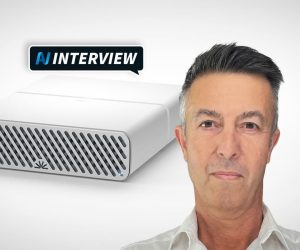
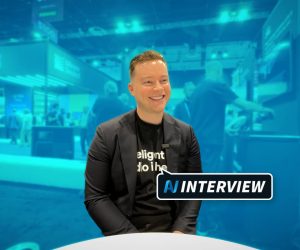
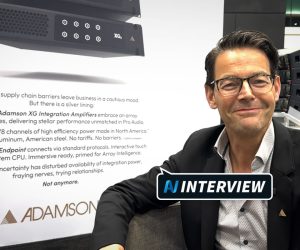
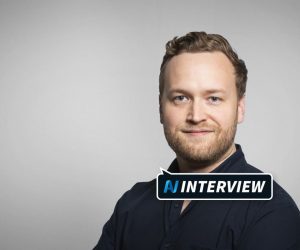
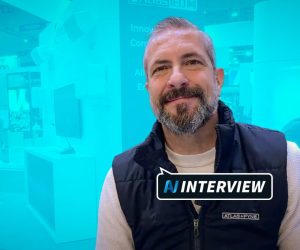
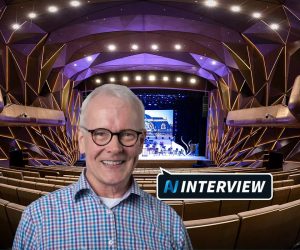
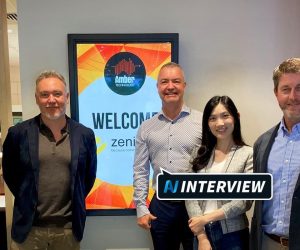

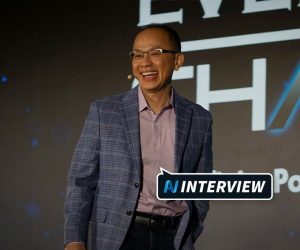
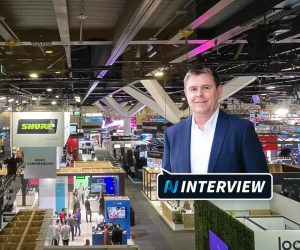
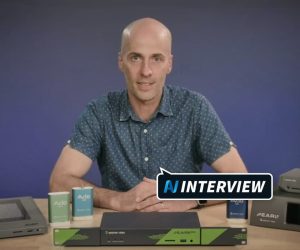
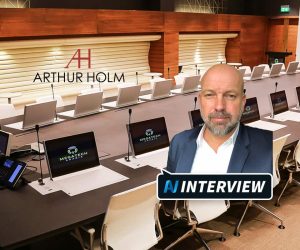


RESPONSES